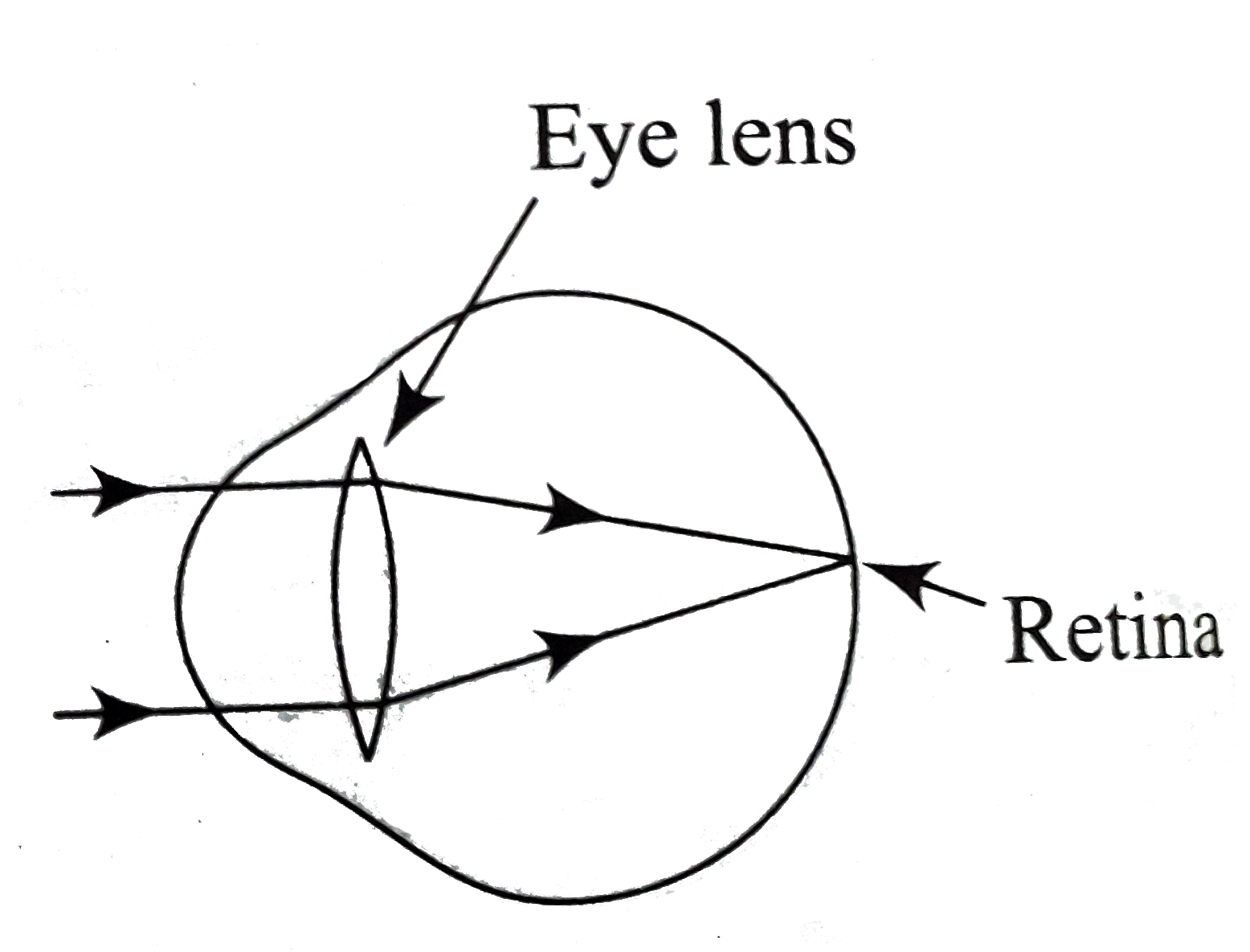The power of a lens used by short sighted person, is -2D. Find the maximum distance of an object which he can see without spectacles.
Power(P)=1Focal length (m)
Given,P=-2D
∴ Focal length=−12=0.5m⇒F=−50cm
Hence, maximum distance of an object, which he can see without spectacles is 50 cm.
Topper's Solved these Questions
- RAY OPTICSBOOK - DC PANDEYCHAPTER - RAY OPTICSEXERCISE - Checkpoint 9.1
10 Videos
- RAY OPTICSBOOK - DC PANDEYCHAPTER - RAY OPTICSEXERCISE - Checkpoint 9.2
10 Videos
- NUCLEIBOOK - DC PANDEYCHAPTER - NUCLEIEXERCISE - C MADICAL ENTRANCES GALLERY
46 Videos
- REFLECTION OF LIGHTBOOK - DC PANDEYCHAPTER - REFLECTION OF LIGHTEXERCISE - Subjective
9 Videos
Similar Questions
The power of a lens used by a short -sighted person is 4 D .find the distance of an object which he can see without spectacles .
View SolutionA short-sighted man, the accommodation of whose eye is between 12 cm and 60 cm wears spectacles through which he can see remote objects distinctly. Determine the minimum distance at which the man can read a book through his spectacles.
View Solution
Knowledge Check
Find the power and type of the lens by which a person can see clearly the distant objects, if a person cannot see objects beyond 40 cm
A−2.5 D and concave lensB−2.5 D and convex lensC−3.5 D and concave lensD−3.5 D and convex lensFind the power and type of the lens by which a person can see clearly the distant objects, if a person cannot see objects beyond 40cm
A−2.5D and concave lensB−2.5D convex lensC−3.5D and concave lensD−3.5D and convex lensFind the power and type of the lens by which a person can see clearly the distant objects, if a person cannot see objects beyond 40 cm
A−2.5 D and concave lensB−2.5 D and convex lensC−3.5 D and concave lensD−3.5 D and convex lens
Aniket from Std. X uses spectacles. The power of the lenses in his spectacles is -0.5 D.
Find the focal length of the lenses used in his spectacles.
View SolutionSurabhi from Std. X uses spectacles. The power of the lenses in her spectacles is 0.5 D .
Find the focal length of the lenses used in her spectacles.
View SolutionFind the power and type of the lens by which a person can see clearly the distant objects, if a person cannot see objects beyond 40 cm
View SolutionFind the power and type of the lens by which a person can see clearly the distant objects, if a person cannot see objects beyond 40 cm
View SolutionThe ciliary muscles of eye control the curvature of the lens in the eye and hence can alter the effective focal length of the system. When the muscles are fully relaxed, the focal length is maximum. When the muscles are strained, the curvature of lens increases. That means radius of curvature decreases and focal length decreases. For a clear vision, the image must be on the retina. The image distance is therefore fixed for clear vision and it equals the distance of retina from eye lens. It is about 2.5cm for a grown up person.
A perosn can theoretically have clear vision of an object situated at any large distance from the eye. The smallest distance at which a person can clearly see is related to minimum possible focal length. The ciliary muscles are most strained in this position. For an average grown up person, minimum distance of the object should be around 25cm.
A person suffering from eye defects uses spectacles (eye glass). The function of lens of spectacles is to form the image of the objects within the range in which the person can see clearly. The image o the spectacle lens becomes object for the eye lens and whose image is formed on the retina.
The number of spectacle lens used for th eremedy of eye defect is decided by the power fo the lens required and the number of spectacle lens is equal to the numerical value of the power of lens with sign. For example, if power of the lens required is +3D (converging lens of focal length 100/3cm ), then number of lens will be +3.
For all the calculations required, you can use the lens formula and lensmaker's formula. Assume that the eye lens is equiconvex lens. Neglect the distance between the eye lens and the spectacle lens.

Q. A near sighted man can clearly see ojects only upto a distance of 100cm and not beyond this. The number of the spectacle lenses necessary for the remedy of this defect will be
View Solution
